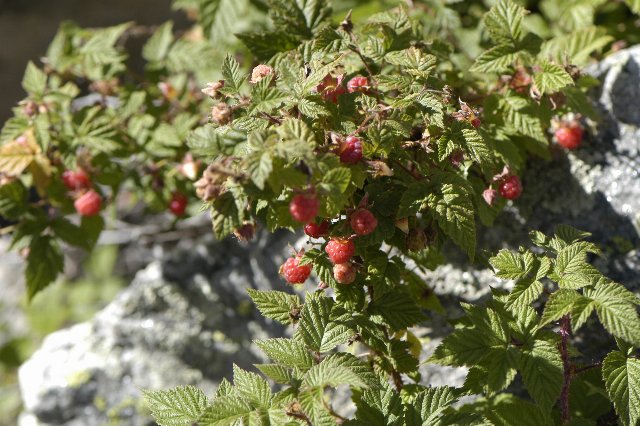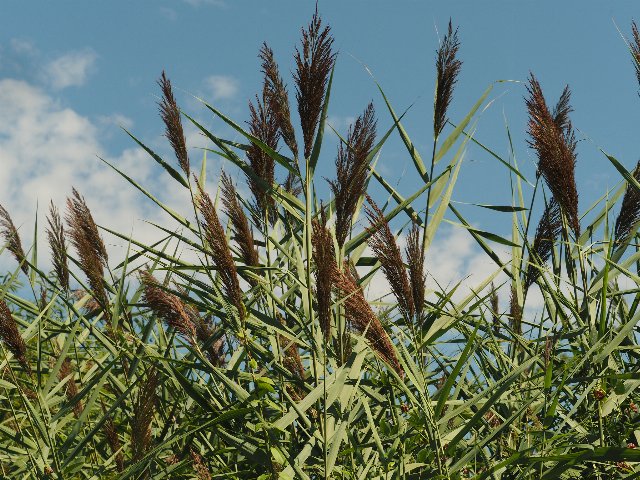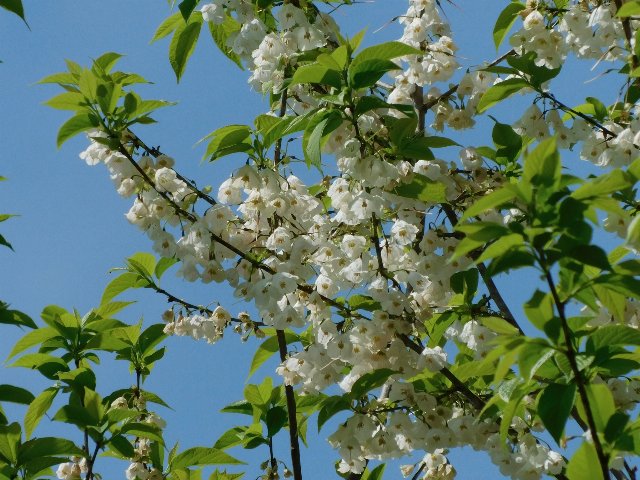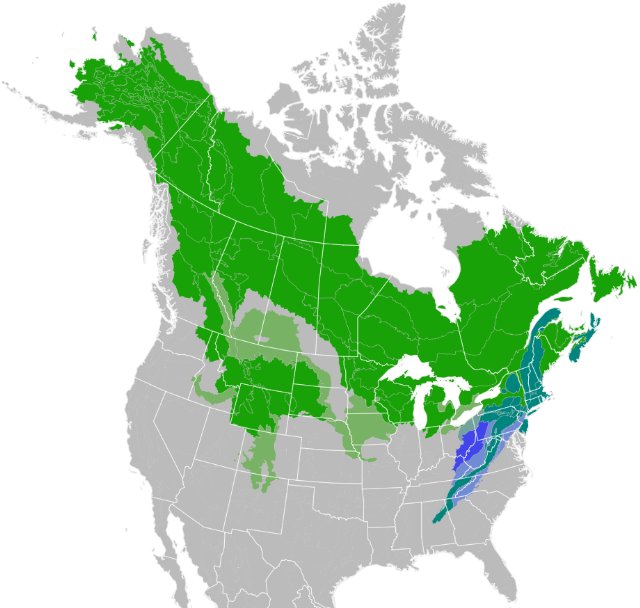All Range Maps 2nd Generation, Taxonomic Updates, & Fundraising Goal Met!
September 29th, 2022 by Alex Zorach
We have three items of progress and good news to announce! The first is that we have finally retired all of the first generation ERA-based range maps, in most cases replacing them with newer, better maps. The second is that along the way, we have also made some important taxonomic revisions. The American red raspberry (Rubus strigosus) is one taxon which we have reclassified, for reasons we explain below. Photo © Elliott Gordon, CC BY 4.0, Source.
The American red raspberry (Rubus strigosus) is one taxon which we have reclassified, for reasons we explain below. Photo © Elliott Gordon, CC BY 4.0, Source.Unrelated to these achievements, we also met our first fundraising goal, and as such, have taken down the fundraising banner for the time since putting it up. The banner will return closer to the end of the year when we start working towards our next goal, but in the meanwhile you can still donate using the donation links in the header or footer of our site.
All Maps Are Now 2nd-Generation Maps
A little over a year ago, we annouced our second generation range maps which represented a significant improvement over our first generation of maps which we published in August of 2019. We initially published the easiest of the maps to generate, but there were intiially still 1,137 of the old maps. Replacing these was more difficult, because the maps that needed to be constructed were ones where there were complexities or challenges, such as taxonomic changes, inconsistencies in data, or other uncertainty or roadblocks.But we have finally finished this task! And, in the course of completing these maps, we have also cleaned up a lot of the data on the site, data used in the ecoregion-based plant lists and search that we launched this March. These lists and searches are now fully free of the deficiencies of the first-generation range data, which included overestimating the ranges of plants at the edges of their range, failing to distinguish when plants were native somewhere but not everywhere in North America, and in a few cases even marking things as native that were not.
Key Taxonomic Changes, Including Mergers & Splits
We have begun updating the taxonomy of many plants to reflect newer research. In most cases, our new treatments reflect that of Plants of the World Online (POWO), run by the Royal Botanical Gardens in Kew, as we have found POWO to have the best taxonomic backbone. However, there are some instances where we have deviated from POWO's treatment. These deviations include several instances of taxa that POWO treats as subspecies of a single species, where we have separated them into two species, only one of which is native to North America. Probably the four best-known species we have split in this way include:- Phragmites australis (Cav.) Trin. ex Steud. was split into the Eurasian common reed (Phragmites australis) and American common reed (Phragmites americanus)
- Urtica dioica L. was split into (the Eurasian) great stinging nettle (Urtica dioica) and American stinging nettle (Urtica gracilis).
- Viburnum opulus L. was split into European cranberrybush (Viburnum opulus) and American cranberrybush (Viburnum trilobum).
- Rubus idaeus L. was split into European red raspberry (Rubus idaeus) and American red raspberry (Rubus strigosus).
 We reclassified Phragmites australis from one species with two varieties in North America, to two separate species. This picture shows the eurasian common reed (Phragmites australis), the more common and widespread taxon in North America, and an invasive plant here. Photo by mefisher, Public Domain, Source.
We reclassified Phragmites australis from one species with two varieties in North America, to two separate species. This picture shows the eurasian common reed (Phragmites australis), the more common and widespread taxon in North America, and an invasive plant here. Photo by mefisher, Public Domain, Source.We split each of these taxa for compelling ecological reasons, such as the fact that the split taxa, in each case, hybridize in the wild either not at all (with Urtica) or infrequently (such as with Phragmites) and less commonly than other taxa (such as Quercus or oaks) that are separated into species. The splits also have the added benefit of clarifying the species-level maps. BONAP's maps for species that include both introduced and native subspecies, such as their map for Rubus idaeus (which lumps native and introduced taxa together into one species) can be hard to read and can obscure information, such as failing to distinguish between where only native populations are found, vs. both native and introduced populations.
We also merged a large number of species, particularly those that were considered separate by the USDA but have been merged under both BONAP's and POWO's treatments. Some of the better-known of these species include:
- Mountain Silverbell, Halesia tetraptera L., was merged into Carolina silverbell (Halesia carolina).
- Vaccinium virgatum Aiton was merged into highbush blueberry (Vaccinium corymbosum).
- Pacific Dewberry, Rubus vitifolius Cham. & Schltdl. was merged into California blackberry (Rubus ursinus)
 Carolina silverbell (Halesia carolina) is one taxon we merged another into, in this case Halesia tetraptera. Photo © mjpapay, CC BY 4.0, Source.
Carolina silverbell (Halesia carolina) is one taxon we merged another into, in this case Halesia tetraptera. Photo © mjpapay, CC BY 4.0, Source.In addition to merges and splits we have carried out a number of more involved reclassifications, where a taxon was split up and different populations (varieties or subspecies of it) was assigned into various different species.
In almost all cases, we updated our maps to reflect the new classification schemes, but there were a few complex and difficult cases where we have struggled to build maps, and in these cases we took the old maps down. We also left a few placeholders or markers for taxa that have been reclassified in such a way that, although the taxon is still recognized, it is no longer thought to occur anywhere in North America. Users searching for the names of these taxa will then see a page explaining the change and pointing them to the names for the new taxa. The best-known example of such a change is perennial glasswort (Salicornia perennis), whose page explains the changes fully.
These explanations can be found in the Taxonomy Notes field, which can be found at the top of each article, above the table of contents. We placed the field here because we thought it critical that a person know what exactly the article is referring to before reading the article or otherwise using it as a reference.
More Range Maps Verified for All of North America (Including Canada & Mexico)
In June we announced the verification of 3,272 range maps for all of North America; we have completed the next phase of these range maps, and now have 4,793 maps verified. What this means is that the maps have been completed for all of North America, including Mexico and Canada. Most of these are plants that only occur in the lower 48 US states, but it now includes 90 range maps extending into ecoregions that do not intersect the lower 48 states, mostly in Canada but a few also extending into Mexico, and many more plants whose ranges extend outside the US but only in ecoregions also intersecting the lower 48. White spruce (Picea glauca) is one species where we have constructed its range map through all of North America; this conifer, a key species in boreal forests, is primarily native to Canada. We have prioritized finishing maps for common tree species in Canada. Photo © , CC BY-SA 4.0.
White spruce (Picea glauca) is one species where we have constructed its range map through all of North America; this conifer, a key species in boreal forests, is primarily native to Canada. We have prioritized finishing maps for common tree species in Canada. Photo © , CC BY-SA 4.0.Presently, just under 30% of the 16,376 range maps have been verified in this way. Completing this process is important for us to be able to generate exhaustive plant lists for ecoregions outside of the lower 48 US states, which includes Canada, Alaska, and Mexico. We will likely prioritize Canada first, and prioritize completing these lists for ecoregions closer to the US, especially those in high-population areas as this is where there is the most demand for such lists, but we are also prioritizing common and ecologically-important species.
Our First Fundraising Goal Met
We have not only met but exceeded our short-term fundraising goal, the modest goal of $5,000. However, this is only the beginning of a multi-step process towards building a sustaining organization that will help us realize the full vision for bplant.org; we are still far from paying a single person a living wage for working full-time on the site, and even farther from being able to hire a staff to do even more. At the same time, meeting our first goal is encouraging; we have taken down our fundraising banner in the site's header for the time being, and will put it up some time closer to the end of the year when we set another short-term goal.The donation links remain in the header and footer if you want to donate even before the banner reappears!
Thank you so much to all of the people who supported us financially and helped us meet our goals. And thank you also to all the people who have been visiting our site, reading our articles, and sharing and engaging with them on social media. We hope that you keep up both the support, and keep using and appreciating the resource that we are creating!
Archive of All Blogs
The Bias Against Tall Plants, November 11th, 2025
A Focus on Goldenrods (Solidago sp.), July 23rd, 2025
Disturbance and its Role in Plant Habitat Preferences, May 29th, 2025
What "Native" or "Introduced" Mean: Myths and Misconceptions, March 11th, 2025
Smarter & More Informative Search Results, January 13th, 2025
The Effect of the 2024 US Election on Plant Biodiversity and bplant.org, October 30th, 2024
The Problems With Nursery-Bought Plants, And The Solutions, October 8th, 2024
More Databases Linked & Search Improvements for Scientific Names, July 9th, 2024
Choosing The Best Common Names For Plants: Challenges & Solutions, April 19th, 2024
Range Map & Taxonomic Update Progress, January 31st, 2024
Giving Thanks To Everyone We Rely On, November 22nd, 2023
Thinking More Deeply About Habitat, April 5th, 2023
2022 Year-End Summary: Successes & New Goals, February 15th, 2023
New Databases Linked: Flora of North America & NatureServe Explorer, November 11th, 2022
All Range Maps 2nd Generation, Taxonomic Updates, & Fundraising Goal Met!, September 29th, 2022
More Range Map Improvements, POWO Interlinking, And Notes Fields, June 7th, 2022
Ecoregion-Based Plant Lists and Search, March 30th, 2022
Progress Updates on Range Maps and More, February 10th, 2022
The Vision for bplant.org, December 9th, 2021
New Server: Software & Hardware, August 30th, 2021
More & Improved Plant Range Maps, July 19th, 2021
A Control Section for Invasive Plants, April 15th, 2021
Progress Bars & State Ecoregion Legends, March 11th, 2021
Our 2020 Achievements, February 9th, 2021
Interlinking Databases for Plant Research, November 11th, 2020
A New Homepage, Highlighting Our Articles, July 29th, 2020
A False Recovery, But North Carolina's Ecoregions are Complete!, June 9th, 2020
We're Back After COVID-19 Setbacks, April 3rd, 2020
Help Us Find Ecoregion Photos, February 27th, 2020
What We Achieved in 2019, December 30th, 2019
Plant Comparison and ID Guides, October 30th, 2019
We Are Now Accepting Donations, October 14th, 2019
US State Ecoregion Maps, New Footer, Ecoregion Article Progress, and References, September 19th, 2019
Tentative Range Maps of Native Plants, August 12th, 2019
Ecoregion Locator and Interactive Maps, July 10th, 2019
Using Ecoregions Over Political Boundaries, May 13th, 2019
How We Handle Wild vs Cultivated Plants, April 16th, 2019
A Blog To Keep People Updated On Our Progress, April 8th, 2019
Sign Up
Want to get notified of our progress? Sign up for the bplant.org interest list!


